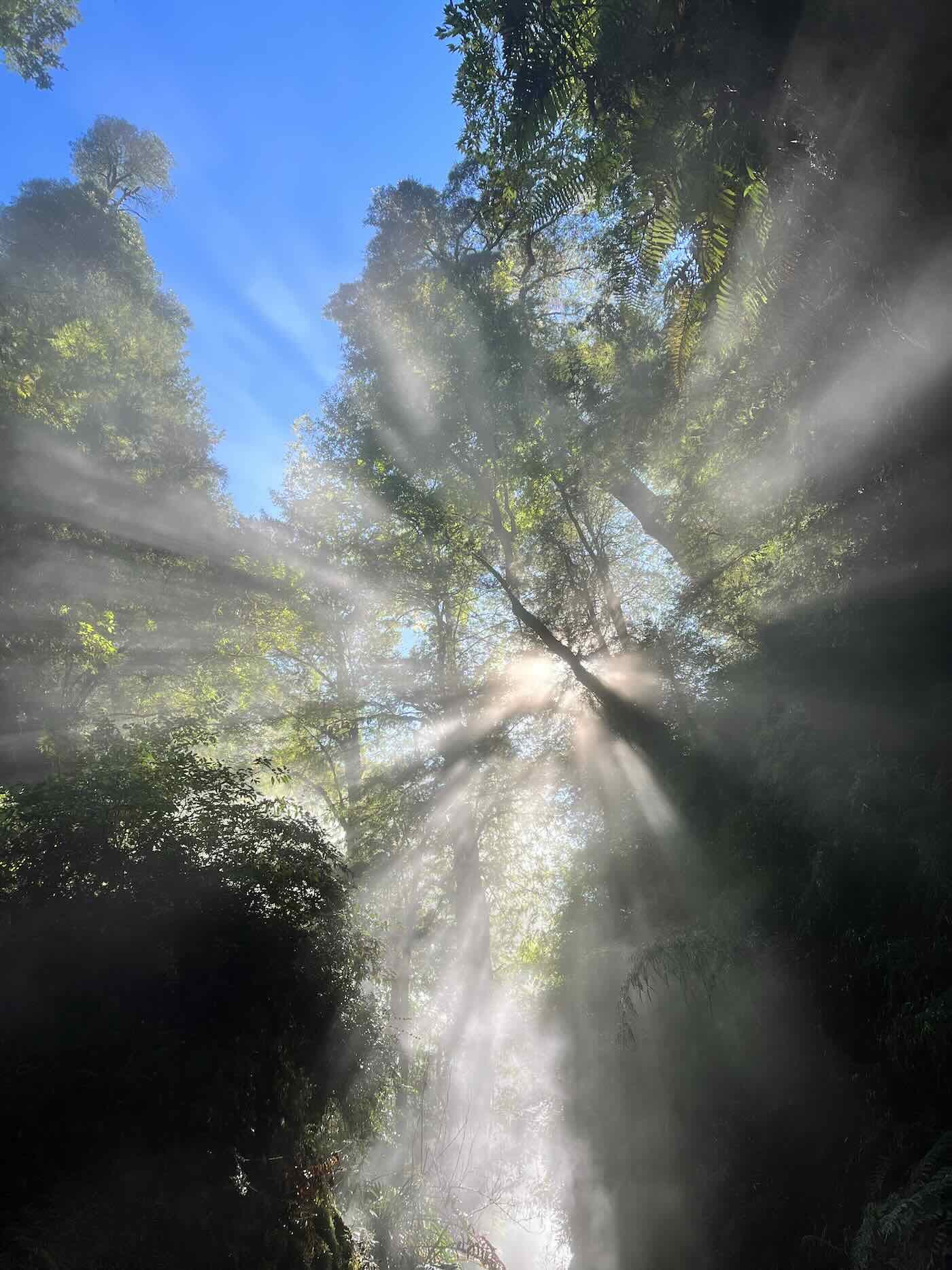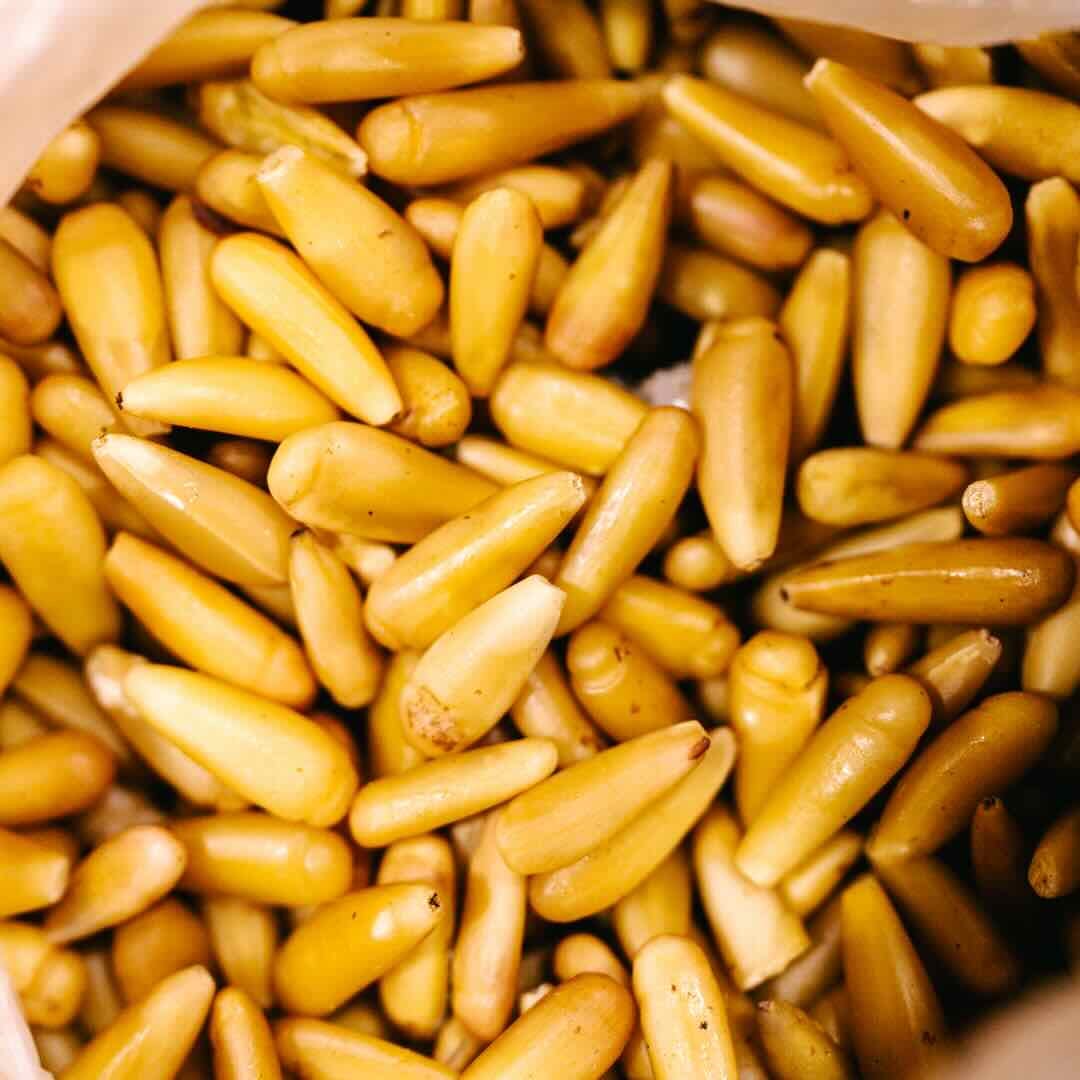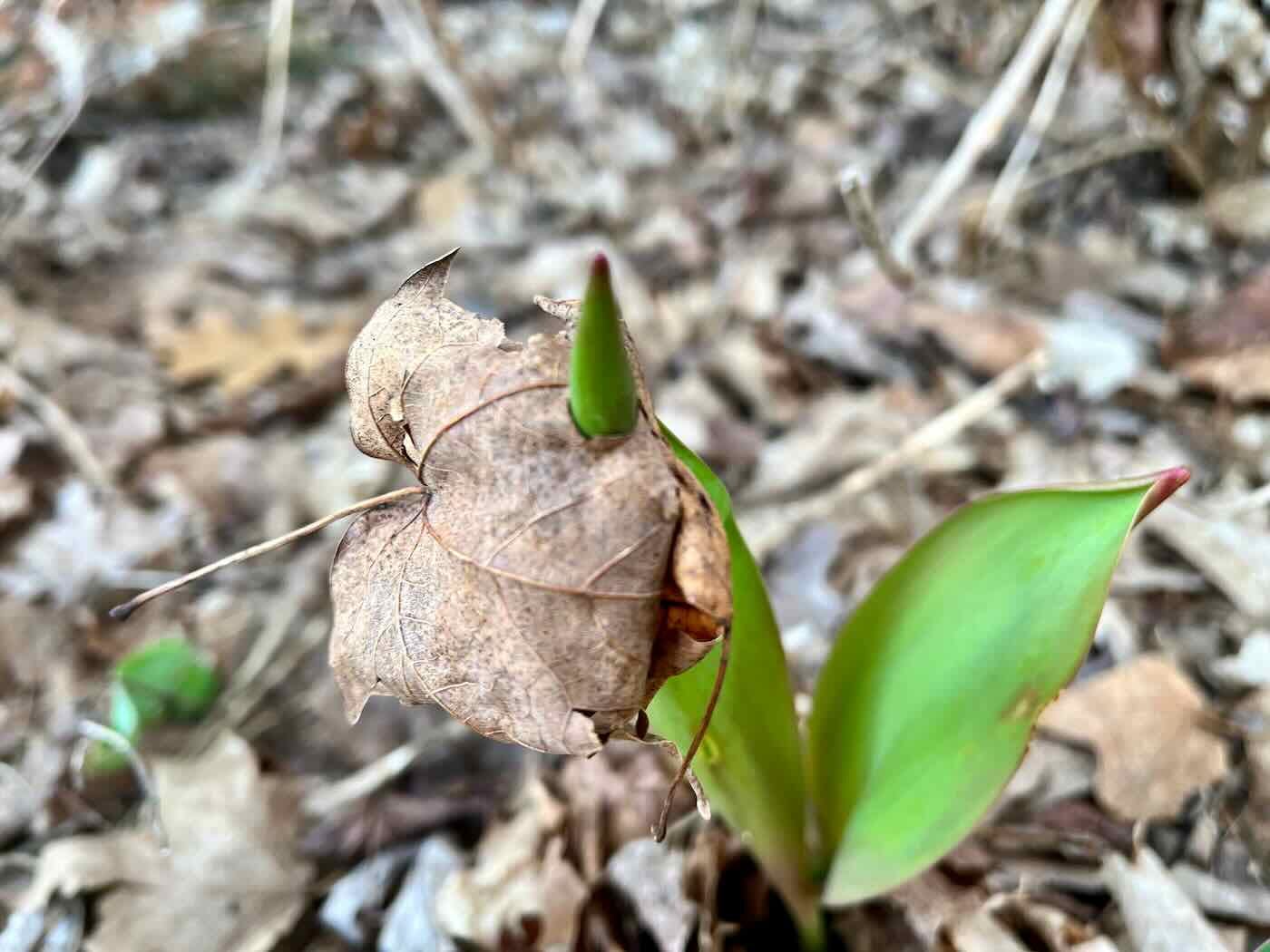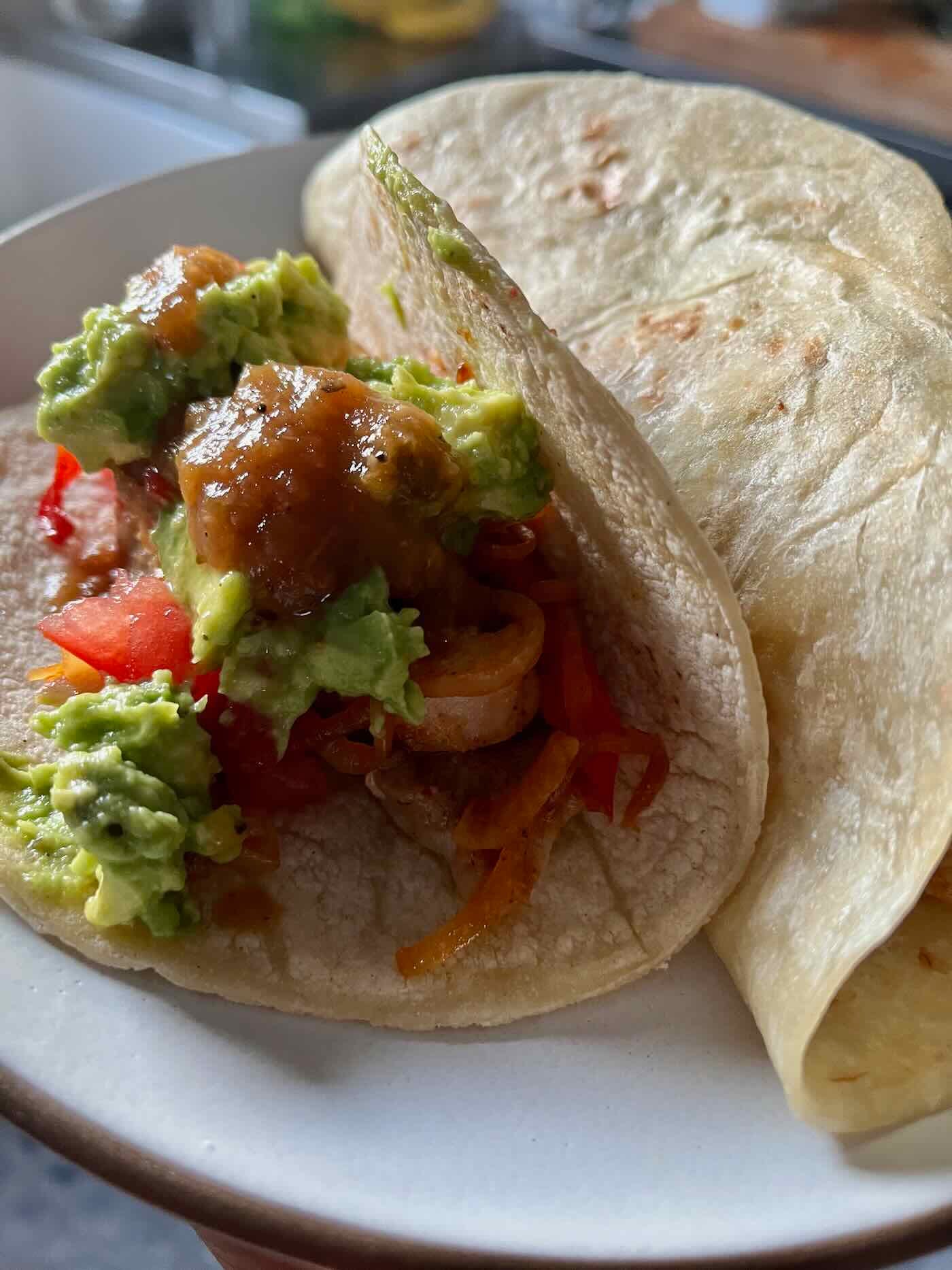The Testimony of the Trees
Some fragmented thoughts on our trip to Chile, the araucania and the coihue, the power of flowers, the flavor of merken, and present griefs
Thursday, March 30
Grand Rapids, Mich.
Hello, dear reader.
Tristan and I landed in Michigan early Monday morning after a memorable reporting trip to Chile for Travel+Leisure.
We could not have known it when we originally scheduled the journey—there is so much you can’t know when you are scheduling a journey, when you are still in the land of make-believe—but the timing of our travels was a gift. Sadness popped up occasionally. For me, it happened most often during meals, when we would have snapped a photo of a favorite dish and texted it to Ashie. But then there were so many infusions of wonder and delight: stunning vistas that were new to us, eye-opening experiences that stoked our imaginations, glimpses of vibrant culture that expanded our understandings, tastes of diverse cuisine that reminded us that we are alive.
A reporting trip isn’t a vacation, much as it might appear that way on Instagram. The core mission is not to relax, not to have fun, not even to make memories, except insofar as those memories go into a notebook for the purposes of telling a story.
Which means that sometimes I have to do things that I would never choose to do on a vacation. On this trip, for instance, I had to go visit some hot springs. I never pack a bathing suit for fun (we can talk about my body issues another day—or maybe never). Any activity involving a bathing suit is just not how I ever want to spend my time.
Look, I’m not going to be the jerk who complains about having to soak in hot springs for work. Discomfort is not danger! And the scenery—a gorge on the edge of a national park, with flora straight out of a Dr. Seuss book—was memorable.

The upside of being forced to do things that I would never choose to do: Sometimes you get to see things in a context you wouldn’t otherwise have had. Sometimes you end up learning something that you wouldn’t otherwise have learned.
After we dried off and changed back into normal human clothes, our guide drove us to into Villarrica National Park, a Chicago-sized expanse of volcanoes and hot springs and terrain reshaped over the eons by lava flows and milky, mineral-rich, glacier-fed streams. In much of central Chile, native forests have been chopped down to make way for quick-growing stands of pine and eucalyptus, which are much more valuable to the timber industry than the slow-growing varieties typical of the original woods. This park protects significant sections of old-growth forest and all that inhabits them: foxes and falcons, puma and monkeys, tiny frogs and rare bumblebees.
After a short walk, we arrived at an araucaria tree that dendrologists estimate is more than 1,000 years old. The araucaria (Araucaria araucana) is a weirdo: Some specimens look like giant Charlie Brown Christmas trees, with way more space between the odd branches than would be considered conventionally beautiful. Many older araucaria have few lower branches at all, as if they’d invested all their energy into growing wild and unruly greenery just at the very top.

The foliage on those branches is less like the needles of a fir or a pine and more like some old-school security system. Which makes sense, I guess, given that the araucania has been around since the days of the dinosaurs. How has it managed to survive where so many other species failed? Perhaps through remarkable adaptability: Though most araucaria are decidedly male (producing pollen-filled cones) or female (producing seeds), some trees are both at once. Occasionally, our guide told us, trees that were once either male or female have even been found to switch naturally—a few years as one, a few years as another.
Sacred to the area’s Indigenous people, the araucaria—pehuen in Mapudungun, the local language—has long been a key source of human sustenance, so much so that the people call themselves the Pehuenche, literally, the people of the pehuen. Rich in fiber, protein, and fatty acids, the starchy seeds, known as piñones, resemble garlic cloves and can be toasted or roasted, ground into flour or stewed with vegetables.
Its odd looks have made it a popular ornamental tree overseas. But, adaptable as it might be, the araucaria is now endangered on its home turf. The climate is changing. Wildfires are increasingly common. Non-native species are encroaching. These forests are shrinking.
We ate our lunch in a clearing. As we dug into our salads, we heard woodpeckers loudly knocking for their own meals. Then we spotted them—a red-headed male and an all-black female. This pair of Magellanic woodpeckers chased each other from tree to tree, high above our heads. As they flew, they squawked at each other—or, who knows, maybe at us.
The stand of trees in which we lunched were mostly coihue (Nothofagus dombeyi), another species that tells an ancient story. Like the araucaria around which they’re often found, these beech trees are weirdos too. Their closest cousins live all the way across the Pacific, in Australia and New Zealand. Once upon a time, before the plates shifted and an ocean grew in between, this land was connected with those.
As I sat there in the presence of trees that have borne witness to so much change and so many eons, I felt a gentle but insistent rebuke: Patience, they said. Patience.
I wonder whether patience is not what I have always thought it was—not a prettier word for complacency, not a sit-on-your-hands kind of waiting. Perhaps patience is the necessary discipline of stilling yourself long enough to see things for what they have been, what they are, and what they could be. You observe. You pay attention. You wrestle with the complexity that you didn’t notice at first. You might even find in your discomfort something of an invitation.
But in the rustle of their leaves and in the abundance of life amidst their branches, I also felt a call to comfort—comfort in the resilience of life, comfort in the endurance of beauty, comfort in the knowledge that change is a reality that, yes, can happen quickly but that can also take a lot of time.
I needed that word because we live in a culture of instant gratification. I worry about the fragility of so much that I love. I do feel such urgency, given the woes of our time.
Don’t get me wrong: I’m not saying that impatience is wholly unjustified. What I am saying is that some things will take more time than we want to give them—and sometimes that is okay. There is a story in God’s good creation that began unfolding before us and will continue after us. Obviously the survival of ecosystems like this one calls for our participation, our goodwill, our faithful action. Obviously complacency will have its consequences. And also? Beauty can and will endure even our neglect, even our best efforts to destroy, even our most grievous and selfish actions.
It’s complicated. And still, hope abounds.
Special thanks to the travel planner Jean Sanz Bernay and her thoughtful team at JSB Journeys for their help and expertise in creating our Chile itinerary.
What I’m Growing: We are seeing signs of spring popping up in our yard. Garlic is growing. Tulip leaves are starting to unfurl. Daffodils are hinting at coming blossoms. What’s most remarkable to me is the unusual way in which what’s new is interacting with what’s old. In the autumn, we left the fallen leaves to decompose, and as the daffodils and tulips have grown, they’ve shown their unexpected power by growing not around those leaves but straight through them.
How does this happen?
What I’m Cooking: While we were in Chile, we tasted merkén for the first time. It’s a spice blend that comes in a gazillion different variations. One chef we met refused to tell us what she puts in her secret mix, but the key ingredient is almost always dried, smoked cacho de cabra pepper, also known as goat’s horn, a variety native to Chile. According to the label, the merkén we brought back contains cacho de cabra, cilantro, sea salt, and one frustratingly vague final ingredient: especias—“spices.”
On our way home from Chile, we stopped in Houston and spent a little time with Tristan’s dad. While we were in Houston, I drove to our favorite tortilleria (always the one on Bissonnet) to pick up some tortillas—a pound of corn, a package of flour—to bring back to Michigan.
So last night, I made chicken tacos. I marinated the chicken in plenty of merkén and some Greek yogurt for an hour before I sautéed it in the cast-iron pan. I cooked red peppers and onion down until they were tender, and meanwhile, I warmed the tortillas on the griddle. Some tomato, some mashed avocado, and a spoonful of one of our favorite salsas (the Heater, from Houston-based Smoke Point, which accentuated the smokiness of the merkén), and it all made for a decent weeknight dinner.
On Monday, a heavily armed person entered the Covenant School, a ministry of a Presbyterian Church in America (PCA) congregation in Nashville, and killed three children and three adults.
In the shooting’s aftermath, Senator Marsha Blackburn, who belongs to a different PCA congregation in Nashville, tweeted that she and her husband were “heartbroken” and invited people to “join us in prayer for those affected.” As of the 2020 election cycle, Blackburn had benefited from more than $1.3 million in NRA support.
The stated mission, vision, and values of Christ Presbyterian Church, Blackburn’s congregation, are lovely. Among them: “We will settle for nothing less than healthy, life-giving community with each other.... We will seek to be good neighbors in every place, inside and outside of our homes.... We will take responsibility to care for all of God’s creation.”
Make this make sense.
This country has so often chosen violence over health, death over life, individuality over community. It shouts about guaranteeing freedom even as it maintains a culture of fear. And even as many of its Christians talk about collective responsibility, our actions are centered mainly on a twisted obsession with personal rights.
I spent part of my childhood in a PCA congregation, and though that denomination does not affirm some aspects of who I am, I treasure that upbringing. The pastor of that church, Al LaCour, remains a cherished friend and one of my favorite preachers. I do not intend this as an attack on the PCA. Rather, I simply want these Christians to be who they claim they want to be—in this society, in this country, and in this world.
On the PCA’s own website, it says, “We hope to engage the culture with Reformed thinking and leadership, along with deeds of love, mercy, and justice to show the transformational power of the gospel.” Do we love children more than we love our guns? Do we love our responsibilities more than we love our rights? Do we love what fosters life more than what brings death? Do we love God and one another to give up what destroys so that something else might survive?
These are the questions that gnaw at my heart and weigh down my soul.
We’ve got a few days left in Lent. Last call for those who would like me to send a postcard of encouragement to someone you know and love. Please email me at makebelievefarmer@gmail.com with their name, postal address, and a line or two that might give me some context about what they’re experiencing right now. I do have some more postcards to send to those you’ve already told me about; I promise I will get to them before Easter, and I will email you to let you know that I’ve written to your dear ones. It’s a gift and a privilege to be alongside them and you.
If you’re in the Research Triangle area or if you would like to join us online, I will be preaching at Crosspointe Church in Cary, N.C., this Sunday. Palm Sunday is always one of my favorites to preach, and (spoiler alert) I always preach about the donkey in the story. Please join us in person or online at 10 a.m. Eastern.
And if you’re in the Minneapolis area, I will be at Meetinghouse Church on April 22-23 for the Guelich Lectures. You are more than welcome to be with us on Saturday (9 a.m. to 3 p.m. CT) and/or Sunday (worship begins at 9:30 a.m.). We’ll be exploring what the Spirit might be calling us to do—and who the Spirit might be calling us to be—at a time of immense inequality, political polarization, fracture, and fear.
That’s all for this week. I’m so glad, as ever, that we can stumble through all this together, and I’ll try to write again soon.
Yours in hope and gratitude,
Jeff






Thank you for addressing what is happening in Nashville. I am a teacher here, just a few minutes from where the shooting took place. It is heartbreaking, yes, and a tragedy. It is also infuriating in how preventable this is. We have the means. We know the solution to keep more kids from dying in our schools. And yet... it is so frustrating to see a senator's thoughts and prayers while the NRA's funding continues to line their pockets. It feels helpless. Thank you for your words. They are helping to carry me through the rest of my week with my students.
I love this sentence “ You might even find in your discomfort something of an invitation”
I’ve had a bit of this this week, and it has been an invitation to slow down, reflect, assess & bring to God even more questions than normal. Especially the latest terror. I got into an uncharacteristic FB comment section rumble with a friend who feels “thoughts and prayers” should be cancelled. I’m a “both/and kind of person. It is definitely also time for action. It is all grievous.
Those tacos! Yum